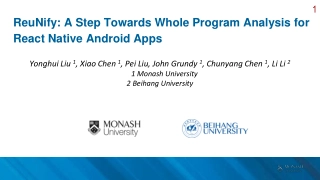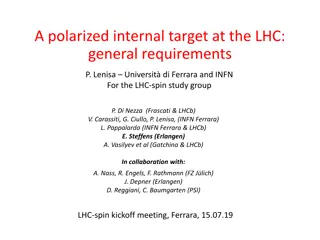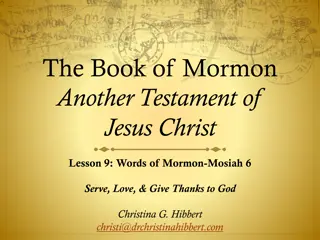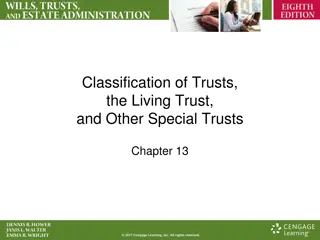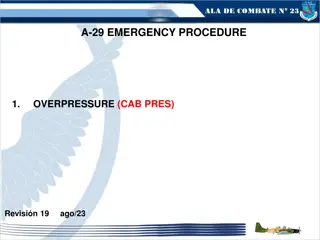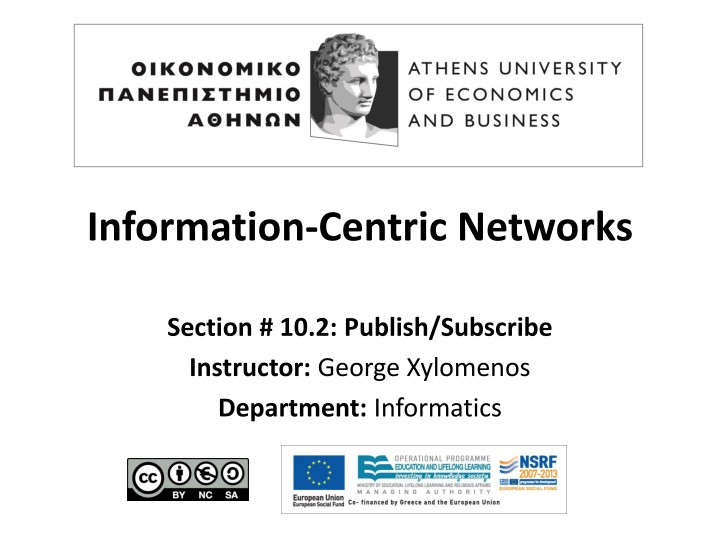
Overview of Information-Centric Networks: Publish/Subscribe, Funding, Hermes Architecture
Explore the concept of publish/subscribe in Information-Centric Networks with insights on funding, Hermes architecture, requirements for scalability, interoperability, reliability, and usability.
Download Presentation

Please find below an Image/Link to download the presentation.
The content on the website is provided AS IS for your information and personal use only. It may not be sold, licensed, or shared on other websites without obtaining consent from the author. If you encounter any issues during the download, it is possible that the publisher has removed the file from their server.
You are allowed to download the files provided on this website for personal or commercial use, subject to the condition that they are used lawfully. All files are the property of their respective owners.
The content on the website is provided AS IS for your information and personal use only. It may not be sold, licensed, or shared on other websites without obtaining consent from the author.
E N D
Presentation Transcript
Information-Centric Networks Section # 10.2: Publish/Subscribe Instructor: George Xylomenos Department: Informatics
Funding These educational materials have been developed as part of the instructors educational tasks. The Athens University of Economics and Business Open Courses project only funded the reformatting of these educational materials. The project is being implemented as part of the Operational Program Instruction and Lifelong Learning and is co- financed by the European Union (European Social Fund) and national funds.
Licencing These educational materials are subject to a Creative Commons License.
Week 10 / Paper 2 Hermes: a distributed event-based middleware architecture P.R. Pietzuch, J.M. Bacon ICDCS 2002 Workshops Main point Pub/sub has limitations compared to invocation models Hermes is a scalable pub/sub middleware Adopts a type- and attribute-based model Type hierarchies are supported Scalable routing using an overlay network Built-in fault-tolerance mechanisms Information-Centric Networks 10b-4
Introduction CORBA and Java RMI have proved very useful Higher-level interface that hides underlying complexity Invocation model: request/reply client/server Good for LANs but does not scale Event-based pub/sub is a viable alternative Subscribers express interest in events Publishers create events The middleware delivers events to subscribers Decoupled, many-to-many communication Hermes is a pub/sub middleware Type-checking, reliability, access control, transactions Integration with object-oriented languages General purpose facilities for different applications Information-Centric Networks 10b-5
Requirements Scalability Distributed implementation, local state, low resource consumption Interoperability Language, platform and network-independent Allow devices to join and leave the system Reliability Support a range of client requirements Fault-tolerance must be built-in Expressiveness Content filters for events and composite event expressions Usability Intuitive mapping between events and language Information-Centric Networks 10b-6
Design of Hermes Hermes middleware model Application using Hermes consist of event clients and brokers Event brokers represent the actual middleware Event clients are event publishers or event subscribers Communicate via events using Hermes Relatively lightweight as they use the brokers Brokers connected in arbitrary topology Accept subscriptions from subscribers Convert publications to messages Route messages towards subscribers Hermes pushes subscriptions towards publishers Filter events as early as possible A dissemination tree is created to forward events The tree uses overlay multicast Information-Centric Networks 10b-7
Overlay routing networks Overlays are built on top of other networks Suboptimal but more sophisticated routing Event brokers in Hermes form an overlay The overlay is similar to Pastry Routes messages with ID s to the node with the closest ID The overlay takes care of failures and node churn Rendezvous between publishers and subscribers Previous systems flooded other subscriptions or publications Hermes uses rendezvous nodes for each event type Their ID is a hash of the event type name Simply send publication or subscription to that ID Replication used to make rendezvous fault-tolerant This is very similar to the Scribe multicast service Information-Centric Networks 10b-8
Types and attributes Event handling by programming languages Usually events are collections of attribute-value pairs Hermes associates each event with a type The event type contains a number of data fields (i.e. attributes) Topic and content-based pub/sub Topic-based is scalable but not flexible Content-based is flexible but not scalable Type- and attribute-based pub/sub is in between The event type is the topic Filters operate over type attributes Each event type is served by an event broker Event type hierarchies are possible A typed subscription will match a type and its descendants Information-Centric Networks 10b-9
Architecture Hermes uses a layered approach Assumes an IP unicast network on the bottom Overlay routing network layer handles routing Type-based pub/sub layer sets up rendezvous nodes Provides topic-based pub/sub Type- and attribute-based pub/sub layer handles filtering Distributes filters towards the source Event-based middleware layer Provides API to applications Advertise, subscribe and publish events Add and remove event types Perform type-checking of events and subscriptions Fault-tolerance, reliable delivery, type discovery, security, etc Information-Centric Networks 10b-10
Event routing algorithms Four message types are used Type messages: add new event types to the system Contain definition of types which are used for type-checking Advertisement messages: publisher announces event types Set up dissemination paths towards rendezvous nodes Subscription messages: subscriber expresses interest on events Also routed towards rendezvous nodes Can continue towards publishers for filtering Publication messages: carry published events Follow paths created by advertisements and subscriptions Two levels of routing Type-based (lower layer) Type- and attribute-based (higher layer) Information-Centric Networks 10b-11
Type-based routing Setting a rendezvous node A type message is sent to the rendezvous node The ID is determined by hashing the event type name Sending advertisements and subscriptions Each node on the path maintains state about messages Brokers that send or were sent the message Advertisements and subscriptions are merged if possible A broker does not forward a message for the same type A tree of brokers is formed by these messages Publishing events Publications are flooded over the dissemination tree They do not need to reach the rendezvous point first Information-Centric Networks 10b-12
Type- and attribute-based routing Distributes filter expressions through broker network Filters examine event attribute fields Filters also propagate towards advertising brokers They do not stop at the rendezvous point They are still merged however if possible More general filters are not merged Publications are filtered as early as possible At the first broker where a filter exists Hierarchies of event types A new type can have a parent The rendezvous node of the parent maintains pointers to children Subscriptions for the parent are sent to its children Information-Centric Networks 10b-13
Fault-tolerance Hermes exploits the overlay network for fault-tolerance Brokers only maintain soft-state that needs to be refreshed A heartbeat protocol detects failed neighbors Link failure: overlay routing bypasses the failed link Broker failure: the broker is bypassed by overlay routing Client failure: state created by client expires in due course Rendezvous failure: each rendezvous node is replicated A salt value is used to determine replica IDs Four replication techniques are possible Clients subscribe to all rendezvous nodes Clients advertise to all rendezvous nodes Rendezvous nodes exchange subscriptions Rendezvous nodes exchange advertisements Information-Centric Networks 10b-14
Implementation Java-based implementation Classes for brokers, sources and sinks Communication via XML-defined messages XML Schema is used to define formats and types XML mapped to Java to hide it from clients Events appear as Java objects to clients Information-Centric Networks 10b-15
End of Section # 10.2 Course: Information-Centric Networks, Section # 10.2: Publish/Subscribe Instructor: George Xylomenos, Department: Informatics

![❤Book⚡[PDF]✔ Spaceplane HERMES: Europe's Dream of Independent Manned Spaceflight](/thumb/21517/book-pdf-spaceplane-hermes-europe-s-dream-of-independent-manned-spaceflight.jpg)
